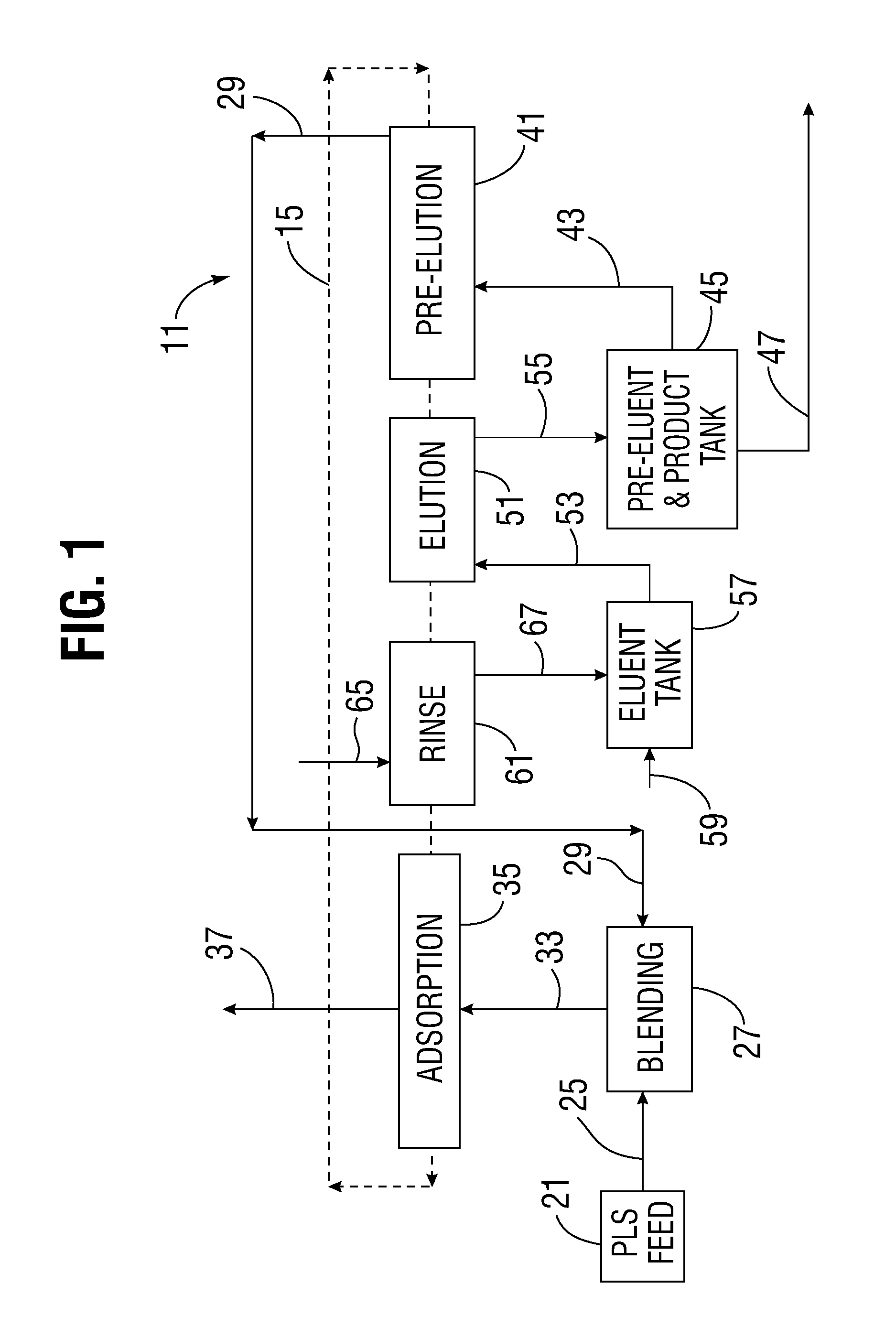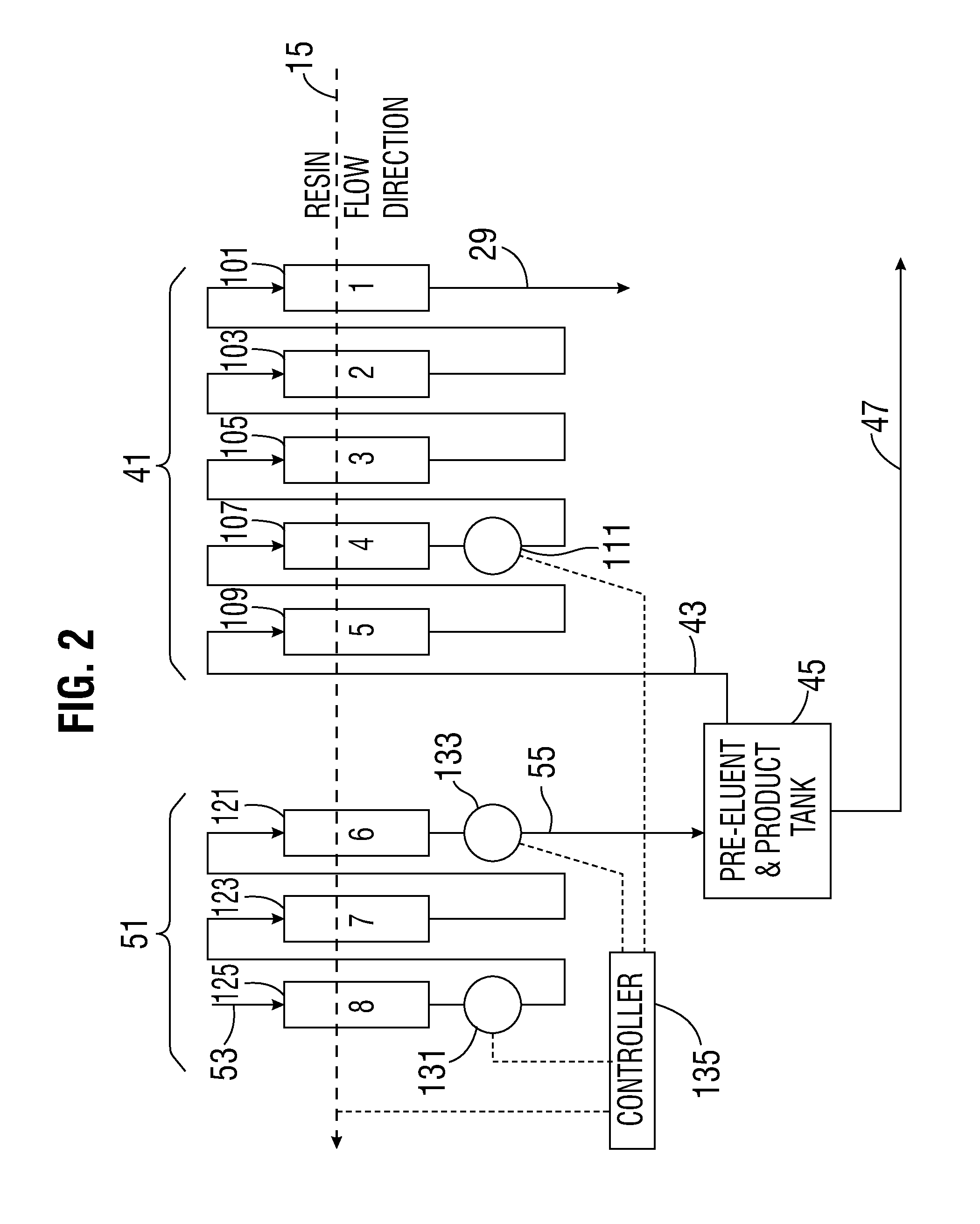Ionic impurities rejection and chromatographic purification using ion exchange
- Summary
- Abstract
- Description
- Claims
- Application Information
AI Technical Summary
Benefits of technology
Problems solved by technology
Method used
Image
Examples
Embodiment Construction
[0038]The present apparatus and method can be applied to a variety of extractive industries and focuses upon the main idea of using a displacing pre-elution enrichment in an ion exchange system to produce a product stream of higher concentration, and more particularly of higher purity (such as a pure uranyl salt solution, for example). The preferably continuous ion exchange (CIX) implementation of this invention gives all the further advantages of continuous operation.
[0039]The apparatus utilized may have volumes and net material balances in each segment of the operation which may or may not balance and which may involve some net excess output or input and further treatment especially as to the eluent. Further, additional treatment of secondarily valuable species can occur, but will not be shown in the diagrams for purposes of simplicity of the diagram.
[0040]Referring to FIG. 1, an overall schematic diagram of an ion exchange purification system 11 is shown. The schematic diagram is...
PUM
| Property | Measurement | Unit |
|---|---|---|
| Selectivity | aaaaa | aaaaa |
Abstract
Description
Claims
Application Information
 Login to View More
Login to View More - R&D
- Intellectual Property
- Life Sciences
- Materials
- Tech Scout
- Unparalleled Data Quality
- Higher Quality Content
- 60% Fewer Hallucinations
Browse by: Latest US Patents, China's latest patents, Technical Efficacy Thesaurus, Application Domain, Technology Topic, Popular Technical Reports.
© 2025 PatSnap. All rights reserved.Legal|Privacy policy|Modern Slavery Act Transparency Statement|Sitemap|About US| Contact US: help@patsnap.com



